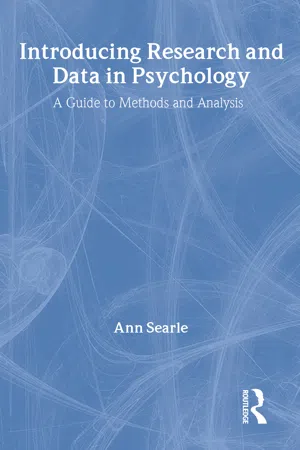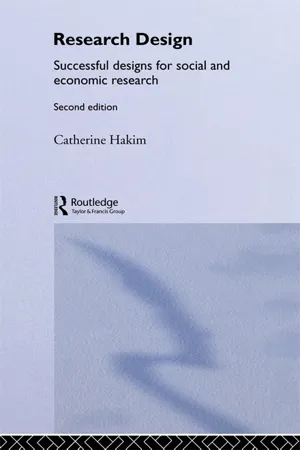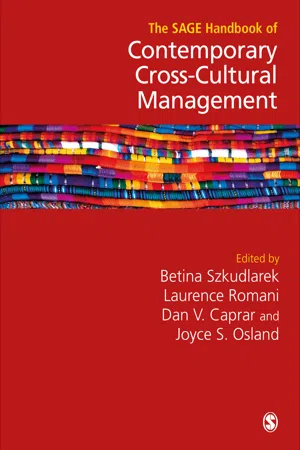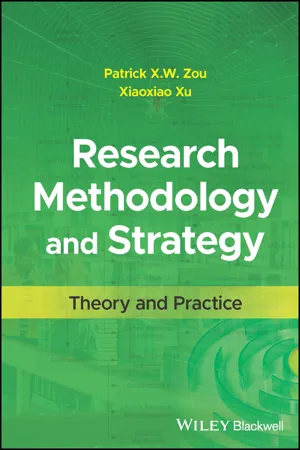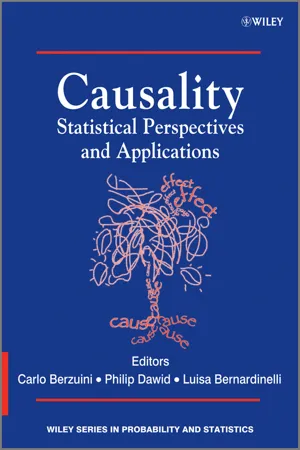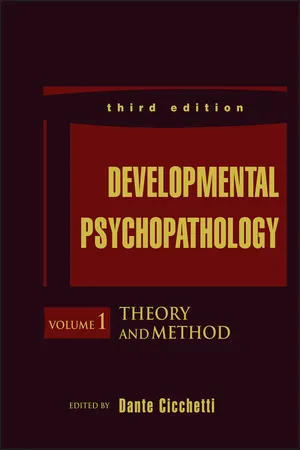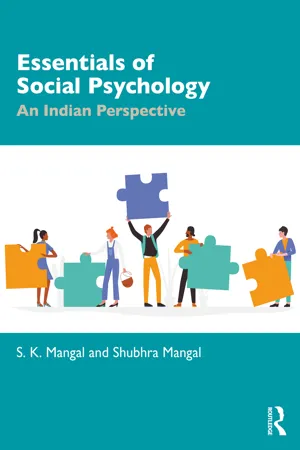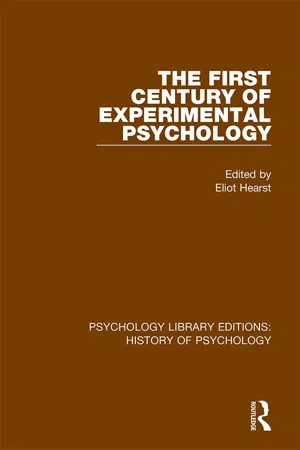Psychology
Natural Experiment
A natural experiment in psychology refers to a research method where the experimenter does not manipulate any variables, but rather observes the effects of naturally occurring events or conditions. This approach allows researchers to study the impact of real-world phenomena on behavior or mental processes, providing valuable insights into human psychology without the need for artificial manipulation.
Written by Perlego with AI-assistance
Related key terms
11 Key excerpts on "Natural Experiment"
- eBook - ePub
- Philip Banyard, Cara Flanagan(Authors)
- 2013(Publication Date)
- Routledge(Publisher)
The three ethical issues (consent, harm, privacy) discussed so far relate to participants’ rights. Kimmel (1996) also points out that there are wider issues for the profession and society. Once such studies become general knowledge (and a number of psychological studies do make their way into the popular press), then people start to think that a person collapsing on the subway could just be a confederate in a psychology experiment. Such deceptions bring psychology into disrepute and may alter the behavior of the general public so, for example, they do not help in an emergency situation.At their best, these studies give us an insight into how people behave in everyday situations; at their worse they are little more than a candid camera technique used to wind people up and then chuckle at their response.KEY TERMSIndependent variable Some event that is directly manipulated by an experimenter in order to test its effect on another variable (the dependent variable).Natural Experiment A research method in which the experimenter cannot manipulate the independent variable directly, but where it varies naturally, and the effect on a dependent variable can be observed.Quasi-experiment Studies that are ‘almost’ experiments but lack one or more features of a true experiment, such as full experimenter control over the independent variable and/or random allocation of participants to conditions. This means that such studies cannot claim to demonstrate causal relationships.Natural Experiments
There are behaviors that psychologists wish to study but where it would be impossible to manipulate anindependent variable, however such ‘manipulation’ may occur naturally. These are calledNatural Experimentsorquasi-experiments: for example, observing the effects of child abuse on emotional development or exposing individuals to TV and observing what effect this has on their behavior. You cannot deliberately expose a child to abuse for obvious reasons and you cannot deliberately stop people watching TV because there are very few people in the world who have never watched TV. There are, however, some communities where TV has only recently been introduced, such as St. Helena (an island in the middle of the South Atlantic Ocean), and this gives psychologists the natural opportunity to observe the effects of TV (the independent variable) on, for example, antisocial behavior (a dependent variable) (Charlton et al., - eBook - ePub
Applied Child Study
A Developmental Approach
- Anthony D. Pellegrini, David F. Bjorklund(Authors)
- 1998(Publication Date)
- Psychology Press(Publisher)
A major advantage of field experiments over those in a laboratory is that the children are being observed in a realistic and familiar setting. As a result, the conclusions made about children’s observed behavior also are likely to be supported by observations in similar, nonmanipulated, settings.The field experiment also has its disadvantages. Experimenters typically exercise control on an external institution, like the classroom, as they can in an experimental situation. For example, teachers in a field experiment, because they were often hired for reasons other than their ability to act as experimenters, may not be consistent in their use of a particular experimental technique. As a result, the actual experimental treatment may not be consistent with the ideal treatment. Experimenters who are trained and retrained to implement a specific procedure may be more reliable.“NATURAL” EXPERIMENTS
Moving down the ladder of control from true laboratory experiments we come to the interesting case of “natural” experiments. Natural Experiments exist when important natural events occur which may have an effect on children’s behavior. Examples of such events include: a family moving from one neighborhood to another, a fetus’ in utero experience, or a group witnessing a traumatic event. We then gauge the effect of these events (considered independent, or predictor, variables) on theoretically relevant behavior. Take the case (reviewed in Rutter, 1985) of a child who is having behavior problems in one school. His parents move house and he attends another school, one with fewer boys having behavior problems. The boy’s problems then decline. We conclude that if we statistically control the effect of extraneous variables, such as income, the move and school change contributed to the decline.Another case: A mother is having pregnancy difficulties and her physician prescribes hormones (androgens). These male hormones represent a “treatment” on the fetus’ development and they typically result in girls exhibiting more male-typical behaviors than comparisons. - eBook - ePub
Introducing Research and Data in Psychology
A Guide to Methods and Analysis
- Ann Searle(Author)
- 2002(Publication Date)
- Routledge(Publisher)
3 Could the finding be generalised to other setting (i.e. do the studies have ecological validity)? 4 Are there ethical problems, sach as lack of informed consent or debriefing? 5 How might demand characteristics affect the behaviour of the participants?Natural Experiments and quasi-experiments
Natural Experiments
In a Natural Experiment a variable changes and the effects on another variable can be measured but:• the changes are not actually manipulated by the researcher, and • there is no control over the allocation of the participants to the different conditions.ExampleAdvantages of Natural ExperimentsIf a school introduced a new reading scheme for one class the effect of this variable on reading skills could be investigated by comparing this class with a class being taught on the old reading scheme. There would be a naturally occurring experimental group for whom something had changed and a naturally occurring control group for whom the status quo is maintained. Such research would not be a true experiment because the research cannot actually decide which child will be in which group and the manipulation of the independent variable (which reading scheme was used) was not under the control of the researcher.• The situation is a natural one and any change would occur anyway so there is high ecological validity.• The effect on one variable resulting from a change in another can be observed as long as other variables which could affect the result can be controlled. Thus cause-and-effect relationships may be inferred—although care must be taken because of the possibility of confounding variables - eBook - ePub
Research Design
Succesful Designs for Social Economics Research
- Catherine Hakim(Author)
- 2012(Publication Date)
- Routledge(Publisher)
Brown and Gay (1985) report on a 1984 study with experimental comparisons of an employer's reactions to applicants of different ethnic origin but with equivalent qualifications for the job, and compare the results with earlier studies to assess trends in recent decades in Britain. The design involved sampling job advertisements and mailing two or three job applications to each employer, the applications being matched on everything except the applicants’ ethnic group.Natural Experiments
Although the examples described so far concern experiments in real-life, or ‘natural’ settings, they are all artificial experiments in that they occurred purely for research purposes. As noted earlier, practical and ethical considerations rule out true experiments on some topics, such as the effects of parental divorce on children, so that research (if done at all) must rely on naturally occurring events. The classic examples of naturally occurring experiments are identical twins reared apart, adopted children reared alongside natural children, and experimental or innovatory communities such as the kibbutz.Some Natural Experiments are ‘accidental’ deviant or strategic cases, the outcome of rare conjunctures, as in the case of identical twins reared apart, or of adopted children reared alongside natural children, which form the basis for research on the relative impact of ‘nature versus nurture’ (Mednick and Baert, 1981 : 215–30).The discovery of oil near isolated, poor and rural communities, and the ensuing major and rapid changes that transform them into affluent and industrialised communities, provides just one example of the naturally occurring event around which an experimental study can be designed. The decision to locate an oil industrial complex in the Shetland Islands offered particular advantages for such a study, owing to the natural boundaries preventing migration and creating a relatively homogeneous and stable population. A study by Voorhees-Rosen and Rosen (1981) - Betina Szkudlarek, Laurence Romani, Dan V. Caprar, Joyce S. Osland, Betina Szkudlarek, Laurence Romani, Dan V. Caprar, Joyce S. Osland(Authors)
- 2020(Publication Date)
- SAGE Publications Ltd(Publisher)
In true experiments, we have control over the variables that we believe are causally involved in creating some change in our dependent variables. We can fully manipulate the variable of interest (give participants no coffee, two cups of coffee or five cups of coffee and then observe the effects on behaviour) and we can randomly assign individuals to conditions (who will drink coffee and who will have no coffee). We have full control over the experimental procedures and assignment of individuals to conditions, therefore the internal validity – the extent to which changes in our dependent variable (e.g. behaviour) are due to changes in our independent variable (e.g. amount of coffee consumed) – is high. However, the extent to which naturalistic conditions can be replicated in such strict ways in an experiment are limited, therefore ecological validity – the extent to which findings are applicable to the real world – are often lower.Quasi-experiments on the other hand are naturalistic experiments, where individuals are members of a ‘treatment’ condition that is beyond the control of the researcher. Culture is a classic natural or quasi-experiment because people are born into different communities that are likely to influence their behaviour (van de Vijver & Leung, 1997). It is quasi-experimental because experimenters cannot randomly allocate individuals to a specific cultural group compared with another and we cannot manipulate or control what specific element of the culture somebody is exposed to (e.g. selective exposure to a high school education system, but not other socio-cultural or socio-economic practices). In this sense, any cross-cultural research by nature is a quasi-experiment (Fischer & Poortinga, 2018).In summary, experimentation forms part of sense-making processes that humans naturally engage in. The ability to differentiate cause–effect relationships also makes experiments a very valuable method for testing theoretical predictions in a post-positivist and critical realist framework. Yet, cultural processes with their complex temporal and contextual dynamics provide significant challenges for experimentalists. We will provide some discussion and guidance on how to design experiments for cross-cultural research and some of the problems that may emerge and need to be considered. It is a nascent field of enquiry and we hope that our guidelines provide a useful starting point.- eBook - ePub
Research Methodology and Strategy
Theory and Practice
- Patrick X. W. Zou, Xiaoxiao Xu(Authors)
- 2023(Publication Date)
- Wiley-Blackwell(Publisher)
6 Technology-Enabled Experimental Research6.1 Introduction
Experimental research is crucial to both natural and social science research. There are two types of experiments, Natural Experiment and social experiment. Natural Experiment uses instruments and equipment to change, control, or simulate the object of research, while eliminating external influences, to make something happen, in order to understand a natural phenomenon, nature, and natural laws. Social experiment aims to see how people behave in different situations or how they respond to different policies. In recent years, technology-enabled experimental research methods have become popular in social and management research. In particular, the convergence of neuroscience and technology is facilitating development in natural science and social science that not so long ago would have seemed unthinkable, as is eye-tracking technology. This chapter first provides an overview of experimental research, then discusses neurotechnology and eye-tracking technology as two emerging technologies, going on to develop a methodological framework for using these technologies to enhance experimental methods in human-related research. Relevant issues such as research scenarios, research variables, research ethics, costs, and skills are also discussed.6.2 Overview of Experimental Research
Generally, the term ‘experimental research’ refers to the methods developed for the specific purpose of testing causal relationships (Dane 1990). It is a scientific method of conducting research using independent and dependent variables and observing an individual or a group experiencing a certain condition, or individuals or groups under different conditions. In experimental research, one or more independent variables are manipulated and applied to one or more dependent variables to measure the effect of independent variables on dependent variables. - eBook - ePub
Causality
Statistical Perspectives and Applications
- Carlo Berzuini, Philip Dawid, Luisa Bernardinell, Carlo Berzuini, Philip Dawid, Luisa Bernardinell(Authors)
- 2012(Publication Date)
- Wiley(Publisher)
18 ‘Natural Experiments’ as a means of testing causal inferences Michael Rutter MRC SGDP Centre, Institute of Psychiatry, London, UK 18.1 IntroductionIn this chapter many different forms of ‘Natural Experiments’ that can be helpful in testing causal inferences are considered. Although there are general principles for good research designs, they take rather different forms according to the nature of the sample and the purpose of the study. In discussing the science, it is crucial to specify the measures and the target population within which cause is to be inferred. In all cases, the analysis needs to complement and take advantage of the design. Accordingly, the presentation of specific examples is essential for considering what makes for better and for less justified causal inferences.18.2 Noncausal interpretations of an associationThere are several rather different reasons why statistically significant correlations or associations or differences cannot be assumed to imply a causative influence (Academy of Medical Sciences, 2007; Jaffee et al. , 2011 Rutter, 2007). Because different research strategies are needed to deal with each of the problems, it is necessary to begin with a brief summary of the nature of each hazard. Throughout this chapter, all of the examples come from the fields of psychology and psychopathology, but the principles apply across the whole of biomedicine (even though the relative magnitude of the hazard varies with different outcomes and different causal influences).A key issue concerns the possibility of reverse causation. Bell (1968) first raised this matter in relation to socialisation effects. He queried whether associations between, say, marked parental punishment and children's mental disorder reflected the influence of children's disruptive behaviour on parental disciplinary practices, rather than the other way round. The reality of child effects has been shown using a range of different research strategies (Bell and Harper, 1977), including experimental methods (Anderson et al. , 1986) and adoptee studies (Ge et al. , 1996; O’Connor et al. , 1998). Longitudinal studies, too, have shown that the rate of environmental hazards in adult life is strongly associated with prior behaviour in childhood (Robins, 1966; Champion et al. , 1995). Second, there is the possibility of social selection – meaning that the outcome reflects the origin of the putative risk factor, rather than its effects. Thus, is the marked increase in psychopathologic risk associated with being born to a teenage mother (Moffitt and The E-Risk Study Team, 2002) due to the quality of rearing provided by an adolescent parent or to the sort of person likely to have a child during the teenage years (Maynard, 1997)? Similar questions arise with respect to the association between social disadvantage and some forms of psychopathology (see Miech et al. - eBook - ePub
- Dante Cicchetti, Dante Cicchetti(Authors)
- 2015(Publication Date)
- Wiley(Publisher)
As we indicated in the introduction to this chapter, several rather different methodological hazards can lead to misleading inferences from observational studies that involve no kind of experimental approach. The Natural Experiments that we have considered differ in which of these hazards they mainly seek to deal with. No strategy is equally appropriate for all the different hazards. Similarly, all research designs involve a range of crucial assumptions. Natural Experiments are no exception to that rule. We have sought to note some of the most important assumptions with the different designs and have indicated, where possible, what may be done to test the assumptions. Fortunately, the different forms of Natural Experiment vary in the assumptions they require. What this means is that conclusions are always likely to be more robust when the same answers are given by several quite different types of Natural Experiment. The consistent evidence, for example, that prenatal exposure to maternal smoking does not have a causal effect in leading to ADHD or conduct disorder well illustrates that point. Kendler and Gardner (2010) provided another example in which they use both co-twin control and propensity score matching to consider the possible causal impact of stressful life events on major depressive disorder. All Natural Experiments require appropriate statistical methods, but in some cases statistics are crucial in adding additional means of testing the process being investigated. The example of the effects of membership of a delinquent gang on an individual's engagement in crime constitutes a good example of this kind.A key limitation of almost all the Natural Experiments that we have discussed is that the designs are much stronger in showing whether or not there has been environmental risk mediation than they are in showing which particular aspect of the environment provided the mediation. Different designs and different forms of statistical analysis are required to take that absolutely crucial step from identifying a truly causal risk environment to a much more difficult issue of precisely which aspect of the environment provided the risk. That is especially the case when dealing with complex environments and when, as is usually the case, there are bidirectional effects that may vary over time. However, it should no longer be acceptable for researchers (or clinicians) to avoid considering whether a causal inference is justified. Both Rutter (2007) and Foster (2010) pointed out that a high proportion of the literature ignores this important question. Some deal with the problem by arguing that they are dealing only with statistical associations and not causation. However, why anybody should be in the least bit interested in statistical associations, if they carry no implications for causation, remains a mystery. Others make explicit that their research methods cannot test causation; nevertheless, in discussing findings at the end of the paper they suggest that the findings do mean causation. Natural Experiments do not provide anything approaching a complete answer to the dilemma of determining when correlation can rightly imply causation, but they do take the field forward in a most important way. - eBook - ePub
Essentials of Social Psychology
An Indian Perspective
- Shubhra Mangal, Shashi Mangal(Authors)
- 2022(Publication Date)
- Routledge(Publisher)
observation technique and approach depending upon our research need and purpose to be solved from such observation. No one particular method out of all these is said to be perfect and sufficient for its use in all situations. Each one of them has its own value, significance as well as limitation. Let us examine the nature and application of these methods one by one for carrying out the task of investigation in social psychology. For this purpose, let us, at present, start with the discussion of the highly used method of investigation in social psychology, known as experimental method. Experimental Method The experimental method, in accordance with its naming, is very much found to lay emphasis on performing experiments. The word ‘experiment’ comes from a Latin word experimentum meaning ‘a trial’ or ‘test’. Therefore, in experimentation we try or put to the test the material or phenomenon whose characteristics or consequences (here the social behavior of the people) which we wish to ascertain. In the sciences, while conducting such experiments in the laboratory or field we may want to learn the effect of friction on motion, the effect of sunlight on growth of plants, etc. In social psychology also, we perform such experiments in the laboratory or outside the laboratory in the social environment – physical or social settings – to study the cause-effect relationship regarding the nature of human social behavior, i.e., the effect of anxiety, drugs or stresses on human social behavior, the effect of media violence on the audience and spectator violence, etc. In performing all such experiments, we try to establish certain cause and effect relationships through objective observations of the actions performed and the subsequent changes produced under pre-arranged or rigidly controlled conditions - eBook - ePub
- Elliot Hearst, Eliot Hearst(Authors)
- 2019(Publication Date)
- Routledge(Publisher)
Behavior, as the term is used here, is broadly conceived, referring not only to actions constituting the organism’s current adjustment to the demands of its environment but also to the processing and storage of information relevant to long-term adjustment of the individual and, in the case of human beings, society.Much of the soul searching and qualms about the future of experimental psychology seems to arise not from observations of failure of the basic methods and approach, but rather from feelings on the part of many psychologists that the methods should not work as well as they actually have and surely cannot continue to do the same. In view of the many lessons from ethology that the behavior of organisms cannot be fully understood without adequate appreciation of their normal environmental settings and the behavioral tendencies and organizations characteristic of their species, how can it be possible to arrive at behavioral or psychological laws of real generality by examining arbitrarily selected samples of behavior in artificial laboratory environments? And considering the accumulating demonstrations by the currently flourishing discipline of developmental psychology that nearly all adult behavior of any complexity is strongly conditioned by individual learning histories, how could there be psychological laws or principles that cut across individual differences in past experience?Investigators close to the mainstream of experimental psychology have been as aware as others of these apparent paradoxes, but rather than being swayed by philosophical arguments they have tended to seek constructive solutions. One form that these efforts have taken during the last decade is the distinction between structural and control processes elucidated by Atkinson and Shiffrin (1968). The distinction took hold rapidly among cognitive psychologists and those associated with the information-processing movement and, by the end of the decade, has even begun to penetrate investigations of animal learning and memory. By control processes one understands the habits (especially pertaining to stimulus selection), criteria, strategies, and heuristics that enter into virtually all behavior of much intrinsic interest outside of the laboratory and certainly all that would be termed cognitive or intellectual in the usual meaning of these terms. - eBook - ePub
Applied Social Psychology
Understanding and Addressing Social and Practical Problems
- Jamie A. Gruman, Frank W. Schneider, Larry M. Coutts(Authors)
- 2016(Publication Date)
- SAGE Publications, Inc(Publisher)
threat to internal validity. Fortunately, the experiment seems to have been conducted with proper controls, and we can be confident that causal relationships were demonstrated. First, participants were randomly assigned to the three experimental conditions, thus reducing the likelihood that the differences between the conditions in helpfulness and harmfulness could be due to differences among the participants in factors (e.g., trait of empathy; personal history of playing violent video games) relevant to the dependent variables. Second, there is no evidence of a breakdown in experimental control in that participants in the three experimental conditions seem to have been exposed to the same environmental stimuli (e.g., same physical setting, same oral instructions) except for the type of video game they played. Had there been a difference between the experimental conditions in a potentially relevant experimental variable, confidence in the internal validity of the study would have been undermined, and we rightly would question the conclusions related to causality.Quasi-Experiments
As we have seen, true experiments permit causal conclusions because they entail randomly assigning participants to the conditions and exerting experimental control, thereby eliminating a host of alternative explanations. However, many events worthy of study are outside of the researcher’s control (e.g., people’s exposure to a natural disaster). In addition, people are already members of particular groups or categories (e.g., gender, religion, socioeconomic level, right- or left-handedness), and so random assignment to those groups is either unethical or impossible. Finally, in many cases where the researcher may implement a treatment (i.e., independent variable), he or she might not be able to assign participants randomly to the different levels of that treatment because participant assignment is not under the researcher’s control (e.g., using humorous examples in teaching one section of a course, but not a second section where students themselves choose their sections when registering). So, how do we address questions involving differential effects on the basis of preassigned groups? The researcher may employ any one of a collection of research designs known as quasi-experiments. Quasi-experiments
Index pages curate the most relevant extracts from our library of academic textbooks. They’ve been created using an in-house natural language model (NLM), each adding context and meaning to key research topics.


